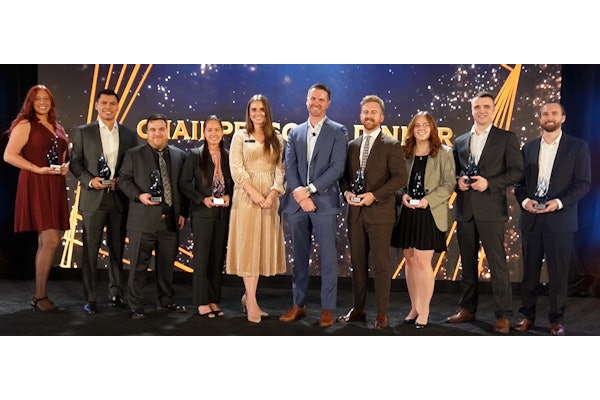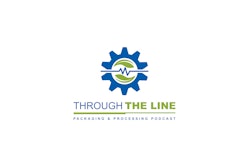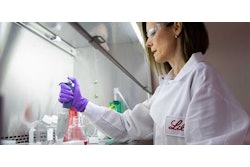Healthcare Packaging (HCP): What package design advances and package system improvements do you see evolving over the coming years to meet the needs of the over-55 age group?
Miyares: Some of the "elder-friendly" concepts we expect to see include the conversion to square- or rectangular-footprint bottles from cylinders--to facilitate [container] opening and to resist rolling off countertops, etc. [Regarding] elder-friendly closures, we saw a spate of these about five years ago. Some were endorsed by the American Arthritis Foundation because they were easier to open than some of the closures required under the Poison Prevention Packaging Act. We also expect to see flexible pouches with larger fins that can be gripped more easily and pulled apart to open the pouch containing a unit dose. Unit-dose packaging itself would be a help.
HCP: Pharmaceutical manufacturers often tout their investment in R&D in efforts
to introduce new drugs into the pipeline, yet we rarely hear of investments in packaging engineers or technologies that are also important in this process. In the next few years, do you envision manufacturers investing in packaging technologies or machinery to improve their operations?
Miyares: We believe pharmaceutical manufacturers will make substantial investments in packaging and processing equipment to streamline operations, reduce changeover time and labor, improve throughput and, ultimately, cut costs. The press for sustainable packaging operations will lead pharmaceutical manufacturers--and others--to recognize that carbon footprint, energy efficiency, and GHG emissions are all directly related to the processes behind the packages, not the packages themselves. And, as they recognize the rising cost of fuel, the need to improve sustainability by reducing demands will become paramount. Mechatronics and robotics are two 'disruptive technologies' that have the potential to transform the development of packaging equipment.
[According to Wikipedia, the free encyclopedia, "a disruptive technology or disruptive innovation is a technological innovation, product, or service that eventually overturns the existing dominant technology or status quo product in the market." Some examples: Digital photography displacing traditional photography, personal computers marginalizaing workstations, and compact discs displacing phonographs and cassette tapes. Ebooks vs paper books is an example of an as-yet unresolved 'disruptive innovation.']
In the coming years, we will see more focus on the development and installation of 'alpha/omega packaging systems,' that is, full-line packaging systems. In the past, manufacturers have concentrated on the development of a narrow range of packaging machinery--fillers or fillers and cappers; or case packers and palletizers. The future will see greater reliance on packaging systems that synchronize every station along the line--cleaning, orienting, feeding, filling, capping, labeling, coding, cartoning, case packing, palletizing, etc.
HCP: Do you see an overall lack of appreciation or respect for packaging professionals in the business community?
Miyares: Packaging tends to be an invisible function in many corporations. Marketing, engineering, procurement, production, distribution, and finance all have a piece of packaging. It's not uncommon to encounter vice presidents of all those disciplines. But packaging vice presidents, although we've seen more of them in the last few years, are still not as common.
HCP: For years, it seems as if there's always been some good-natured ribbing between marketing and engineering personnel when it comes to developing a
package. Is that more pronounced in food and beverage package development than in pharmaceutical/OTC? Why or why not?
Miyares: If it is more pronounced in the food and beverage field than in pharma/OTC that's probably because marketing plays a bigger role in food and beverage. Still, we see the dichotomy across all industry sectors. Whenever packaging managers get together, the discussion inevitably turns to the dynamic tension that exists between marketing and engineering or the purchasing/procurement vs engineering tracks. The latter tug of war has become more pronounced in the last 10 years as companies, pressing to lower costs, have adopted practices such as reverse auctions and have succeeded in procuring the lowest cost, but not necessarily the best performing materials/containers/equipment. In this scenario, procurement gets a bonus for purchasing the needed production component at a low price, while engineering/production/operations bear the brunt of criticism when the low-cost item fails to function at the expected levels.
HCP: Food and beverage package breakthroughs and innovations occur on a fairly ongoing basis. OTC pharmaceutical products, on the other hand, seem to lag behind. Do you agree? Why or why not? Do you see that changing as nutraceuticals, cosmeceuticals, generics, and other products create a more competitive environment?
Miyares: Because the primary role of OTC packaging is still to protect the efficacy of the product, I doubt that you're going to see breakthroughs like glow-in-the dark inks, ultra-lightweight containers, or biopolymer containers pop up in the field until they've undergone the vetting expected in the field. A lightweight plastic container for a food or beverage product might not have the same shelf life as the container it replaced, but it is still acceptable in the marketplace. However, when you use a thinner-gauge bottle or packet for aspirin, the degraded barrier provided by the lighter/thinner package can have a decided impact on the efficacy of the aspirin.
HCP: Healthcare Packaging just published an issue focusing on Overall Equipment
Effectiveness. It seemed that a common theme among our interviewees was that, as major pharmaceutical product patents expire and as generic products increase, the profit margins of pharmaceutical manufacturers are eroding. That means that they are looking to OEE, Six Sigma, and lean manufacturing processes as ways to cut their own costs. With that in mind:
1. What should pharmaceutical manufacturers look for when purchasing packaging equipment?
Miyares: As with any packaging system acquisition, the pharmaceutical packager needs to understand how the equipment will be used and what the experience and reputation of the machinery manufacturer ranks vs another system being considered. Probably the most common packaging-technology acquisition error packagers (pharmaceutical firms and non-pharmaceuticals alike) make is to focus on the purchase price of the equipment, opting for a lower-priced system in the false belief that a $2.5 million unit is a bargain when compared to a $3 million system meeting equivalent performance specs. The fact is that over the average 12-year operational lifespan of the two machines, the price of the equipment becomes less and less significant as operational efficiency, changeover, uptime, service, maintenance and support become more critical. Over time, the less-expensive machine that requires more change parts is out of service longer, etc., and becomes the more costly machine. The true gauge of the value of a packaging system is the total cost of operation (TCO). Work with your packaging system developer to determine, and validate, service claims, to determine the true TCO. It's a lot tougher than determining what the price of the equipment is, but--in the long run--it's the only way to determine a system's value.
2. How are packaging equipment manufacturers adjusting to this changing dynamic to provide equipment that the pharmaceutical companies can more readily monitor for efficiency and provide validation to meet FDA regulations, and so forth? Is this where advanced control systems become critical?
Miyares: E-machinery--the ability to take time and distance out of the packaging equipment evaluation, purchasing, Factory Acceptance Testing, installation, maintenance, servicing, etc.--is the key. Packaging machinery manufacturers have, for years, offered various technologies to remotely monitor/adjust the performance of packaging operations. These offers often encounter resistance from corporate IT managers who are concerned about the security of their corporate networks and fear that e-machinery services might lead to breaches of their operational security.
In the future this will be less of a problem as security provisions are put in place that let operators 'call out' to packaging machinery manufacturers and limit the communications to an as-needed basis. Some packaging machinery manufacturers already equip their salesmen, technicians, and engineers with PDAs that signal them 24/7 if a particular line is down and empower them to investigate, diagnose, and service the equipment immediately.
HCP: Biopharmaceuticals/biologics/biologicals represent an intriguing area in terms of advanced medical treatments. But unlike many drugs, biologic products are not as stable and cannot withstand traditional packaging and sterilization processes. Do you see the packaging supplier community developing more advanced materials or machinery for such products?
Miyares: Yes. Packaging equipment developers have always responded to the needs of the marketplace, and they will continue to do so.
HCP: How can packaging machinery or materials be improved to help meet
validation requirements?
Miyares: Smarter materials and more sensitive equipment (self-adjusting to conform to changes in the packaging material feedstock, for instance).
HCP: How can packaging machinery or materials be improved to help thwart
counterfeiting?
Miyares: There are already a host of technologies in place to thwart counterfeiting. From forensic codes to RFID, taggants, molecular tags, nanofingerprints, serialized, microminiaturized codes, and layering of covert and overt technologies are among the [technologies] that come to mind. Protecting products and packaging from counterfeiting is far more difficult than stymieing currency counterfeiters because there are so many different packages, and we don't always know what the package is supposed to look like. How, otherwise, can you explain the fact that some counterfeit Viagra has been found that consisted of nothing more than blue chalk tablets in a plastic zippered bag! [HCP]
--Jim Butschli, Editor
Watch for 'alpha/omega' packaging lines
Synchronized lines, rather than individual pieces of equipment, will be a focus of pharmaceutical manufacturers, predicts PMMI's Ben Miyares. In this exclusive Q&A interview with Healthcare Packaging, Miyares addresses multiple healthcare packaging-related issues, including mechatronics and robotics, which, he says, "have the potential to transform the development of packaging equipment." He also looks at sustainability, packaging equipment purchase considerations, E-machinery, and counterfeiting topics.
Feb 15, 2008
List: Digitalization Companies From PACK EXPO
Looking for CPG-focused digital transformation solutions? Download our editor-curated list from PACK EXPO featuring top companies offering warehouse management, ERP, digital twin, and MES software with supply chain visibility and analytics capabilities—all tailored specifically for CPG operations.
Download Now
Researched List: Blister Machines for Life Sciences
Need a blister machine for life sciences packaging? Our curated list features companies serving pharmaceutical, medical device, nutraceutical, and cosmetic industries. Download to access company names, locations, machine specifications, descriptions, and more.
Download Now
Downloads
















